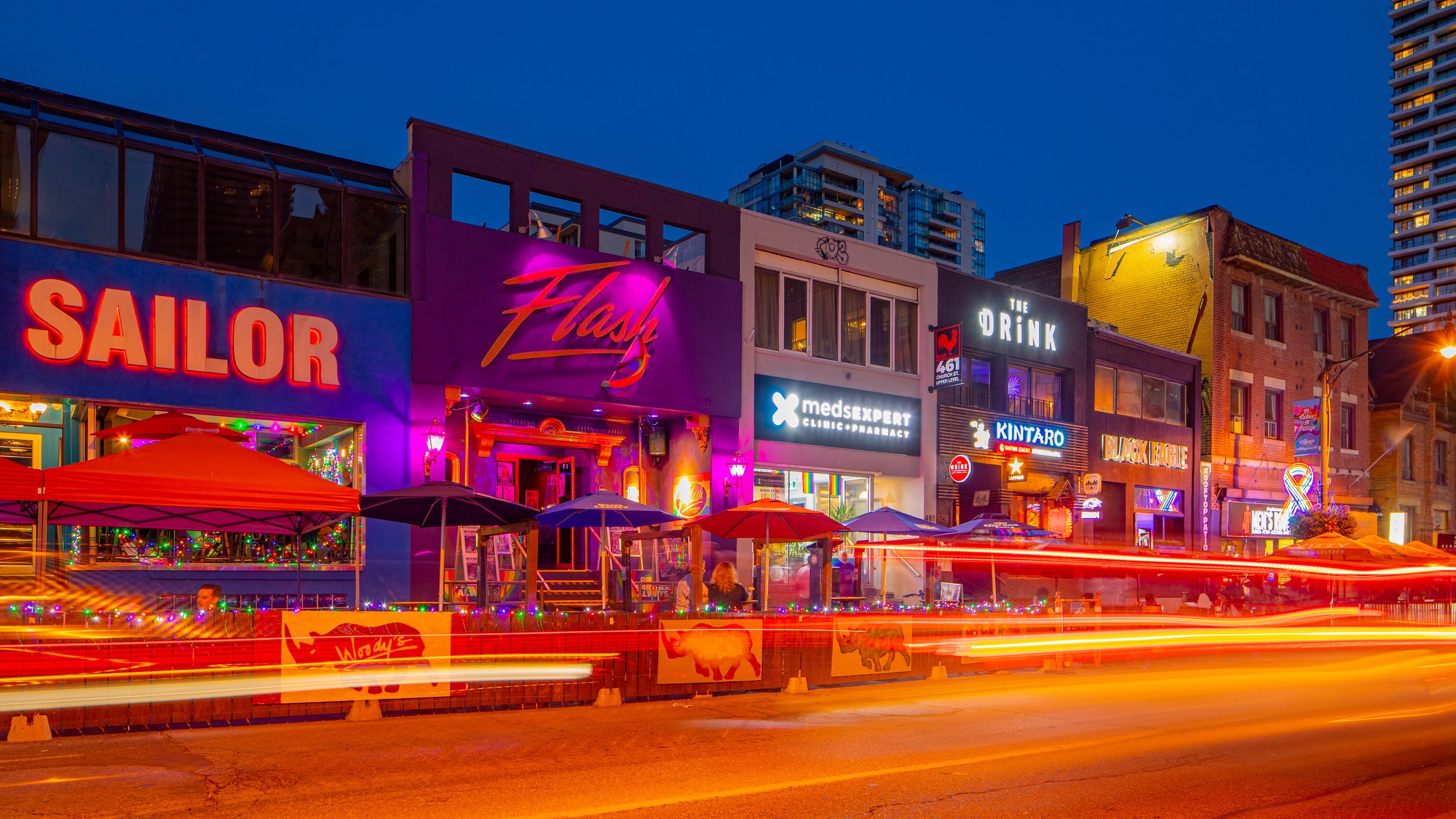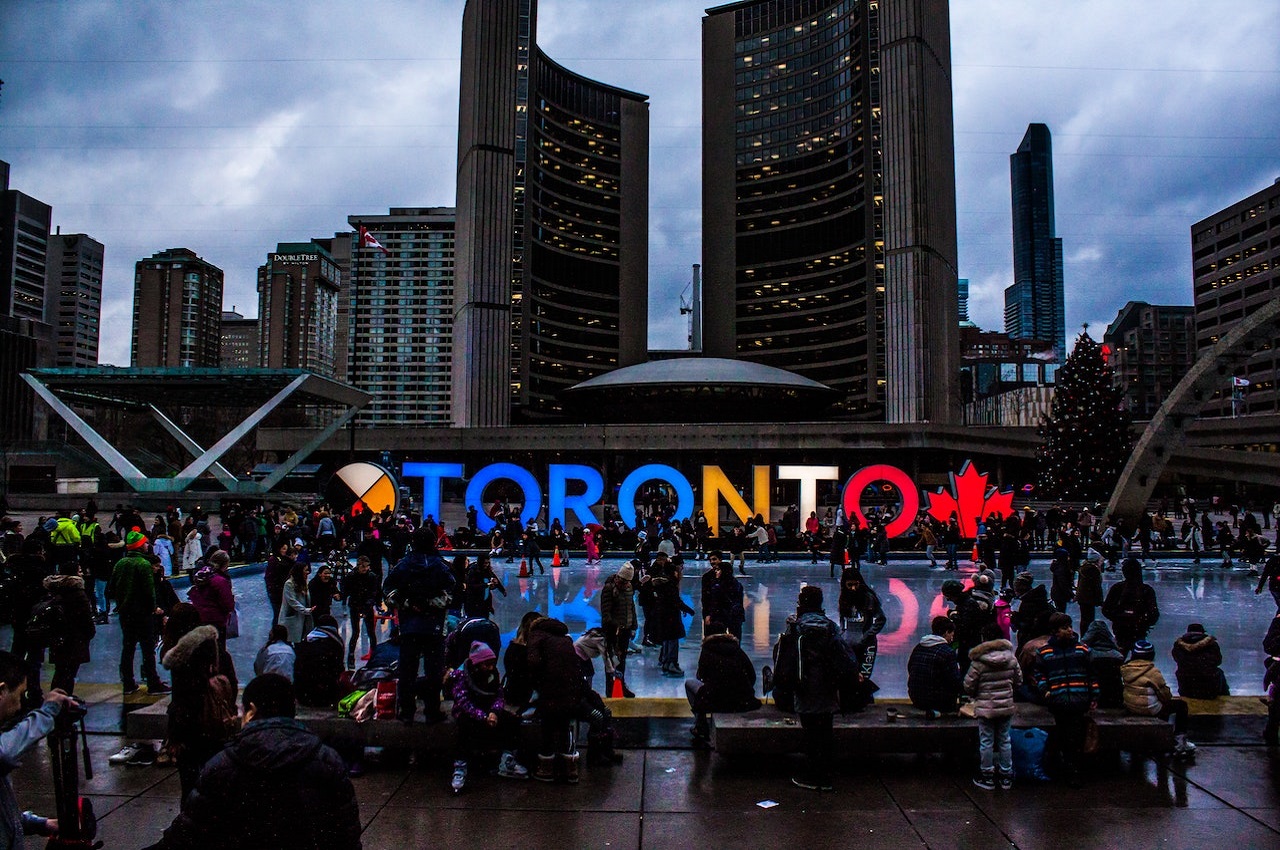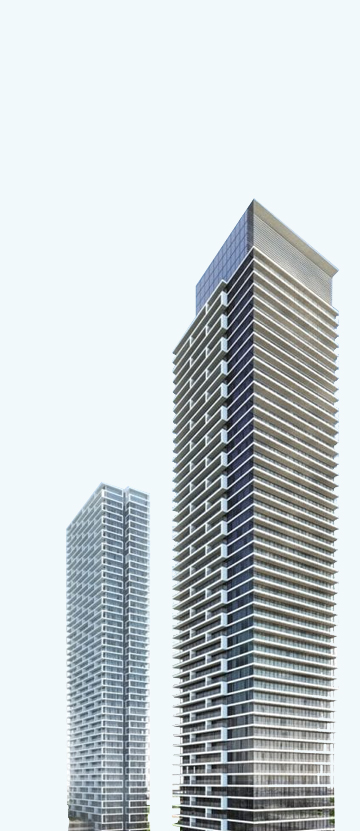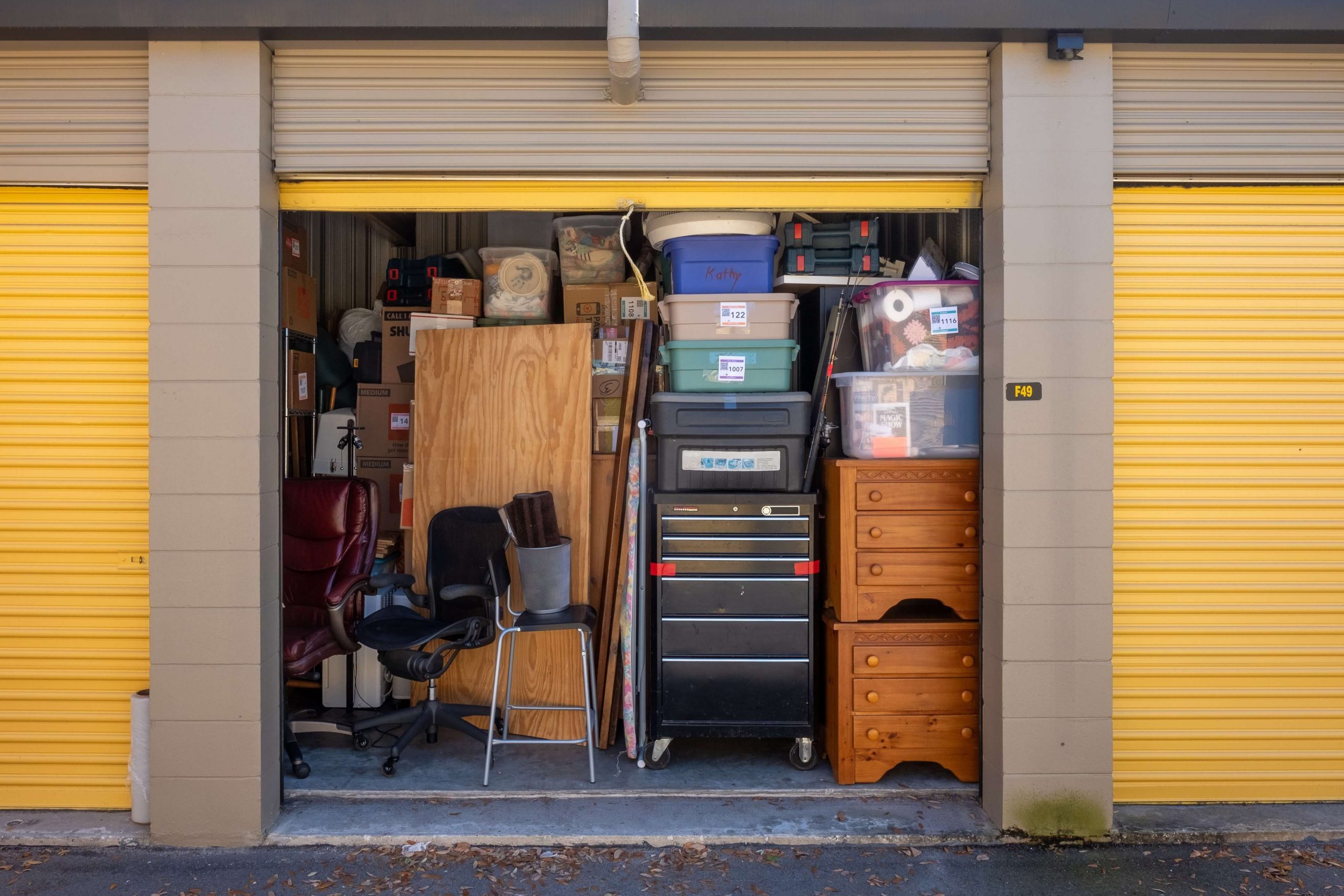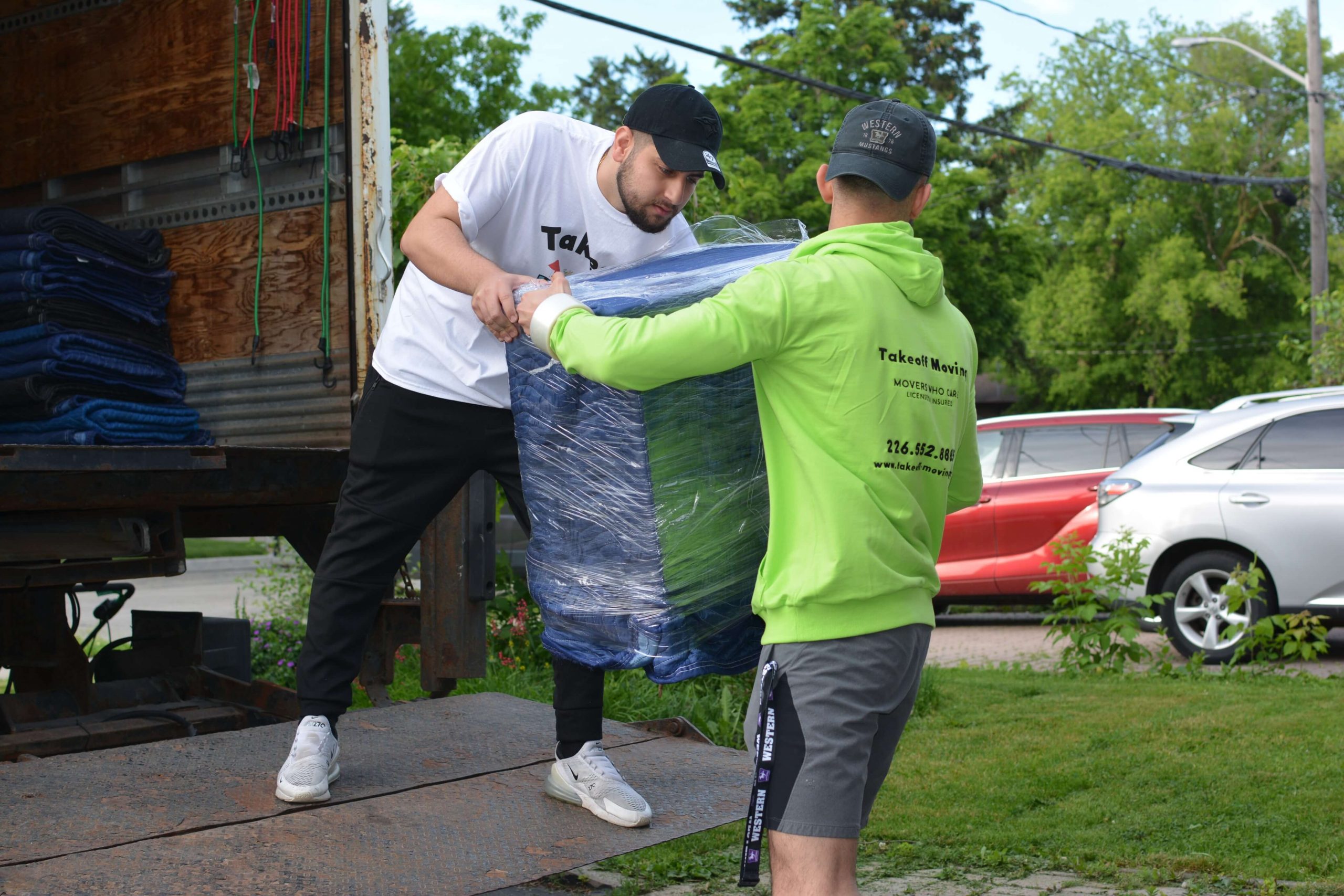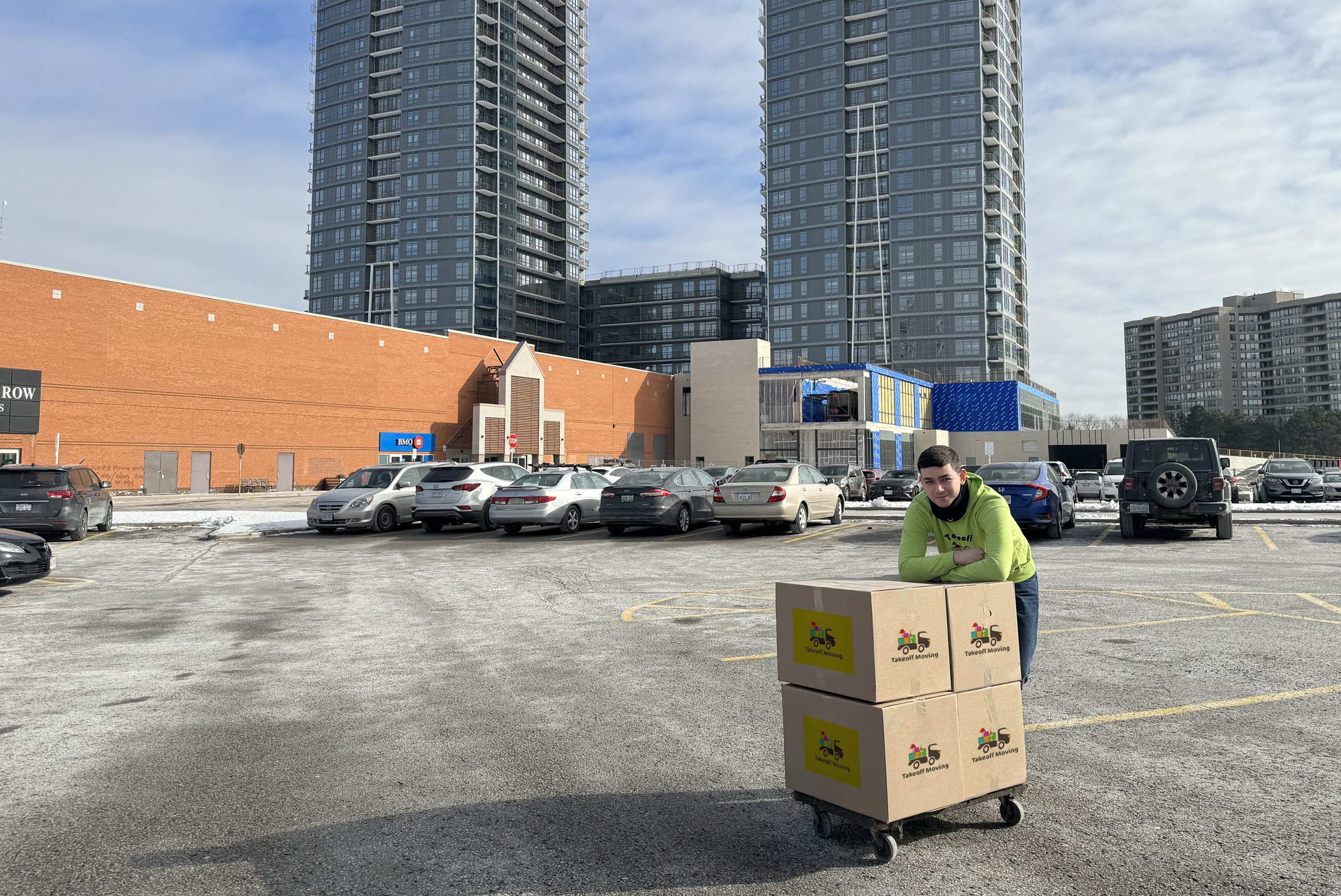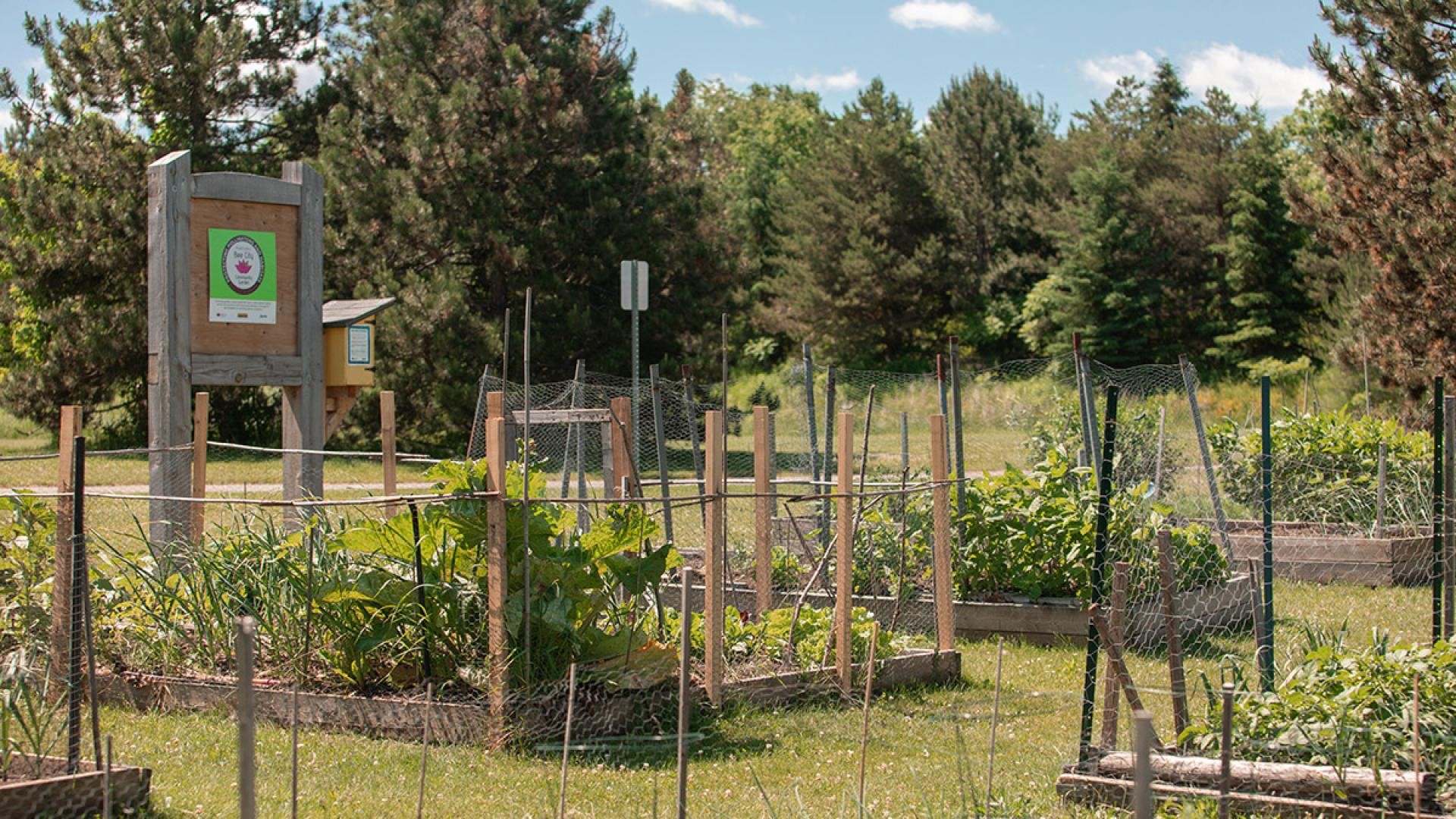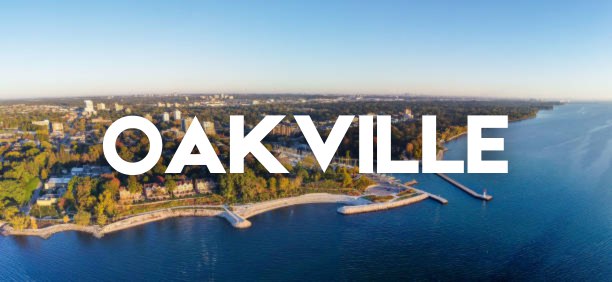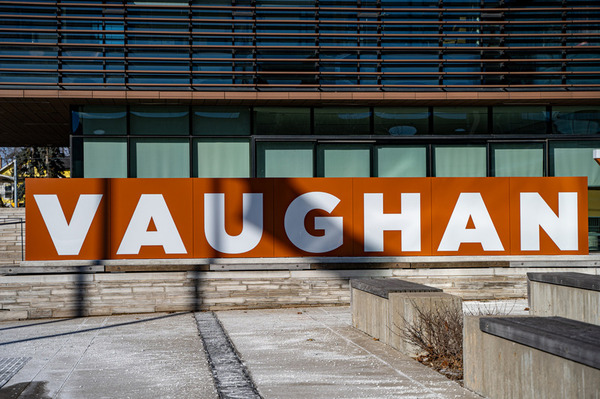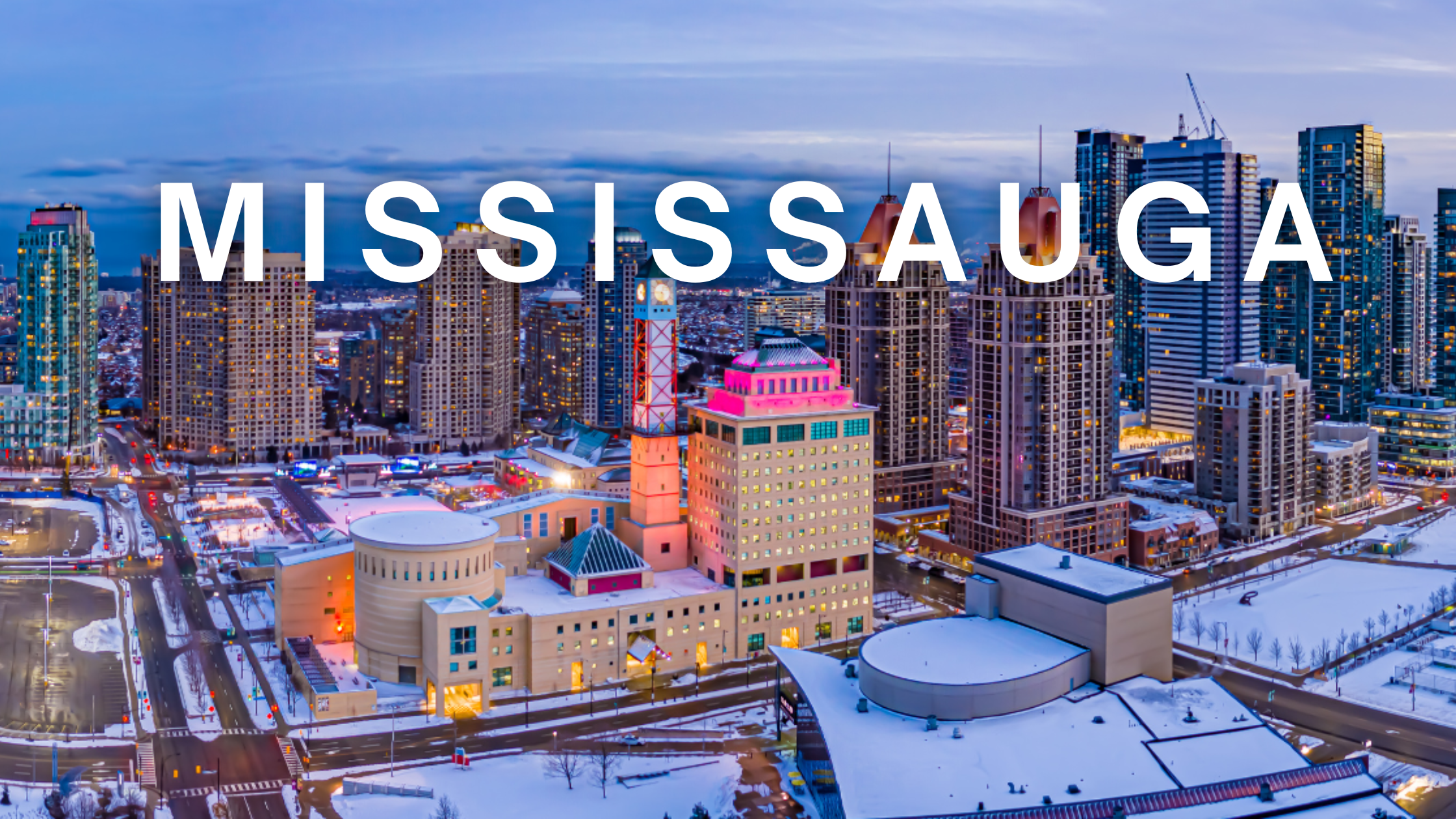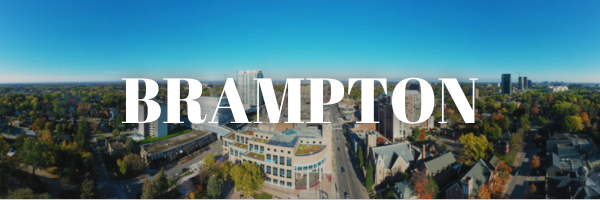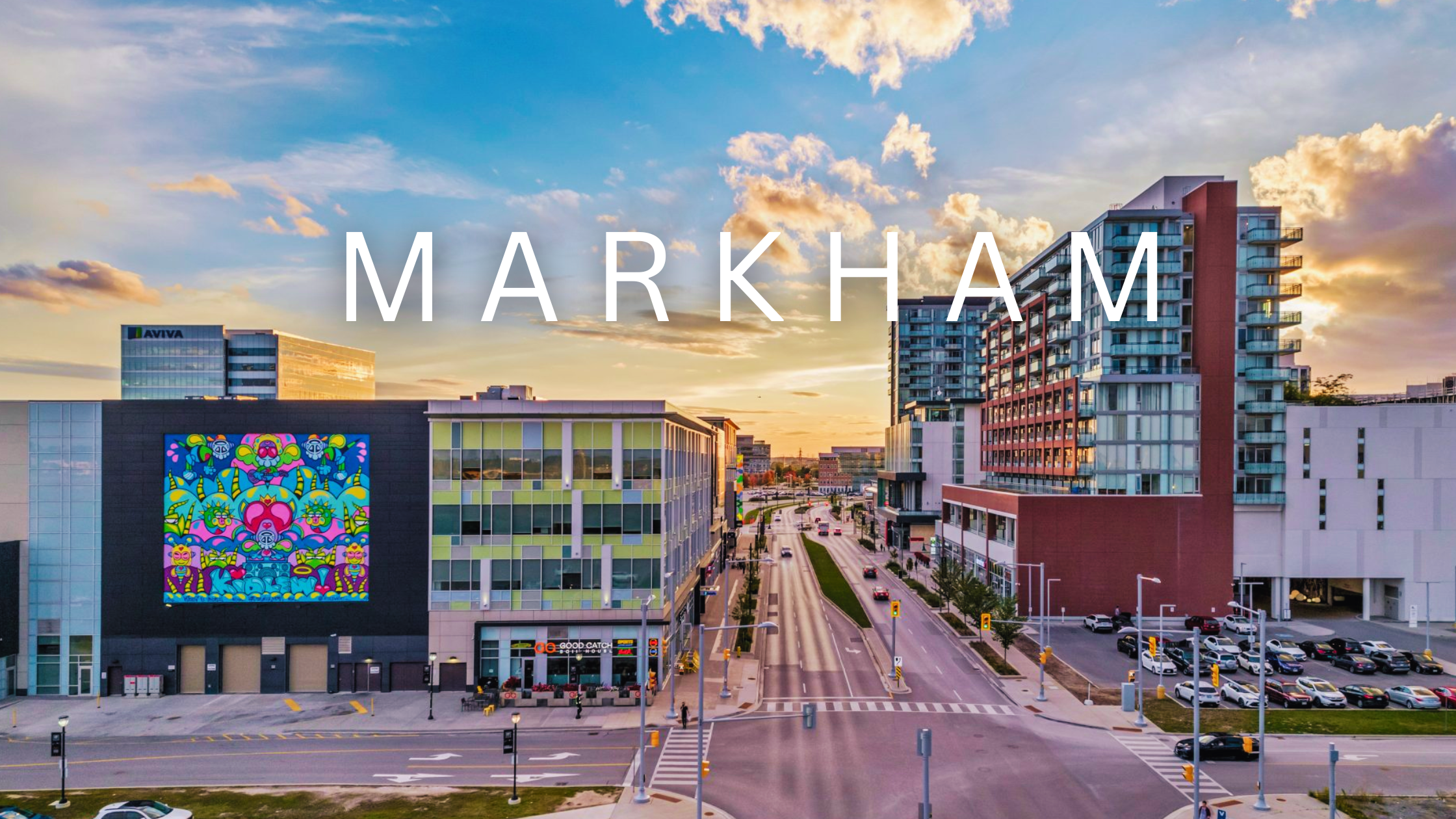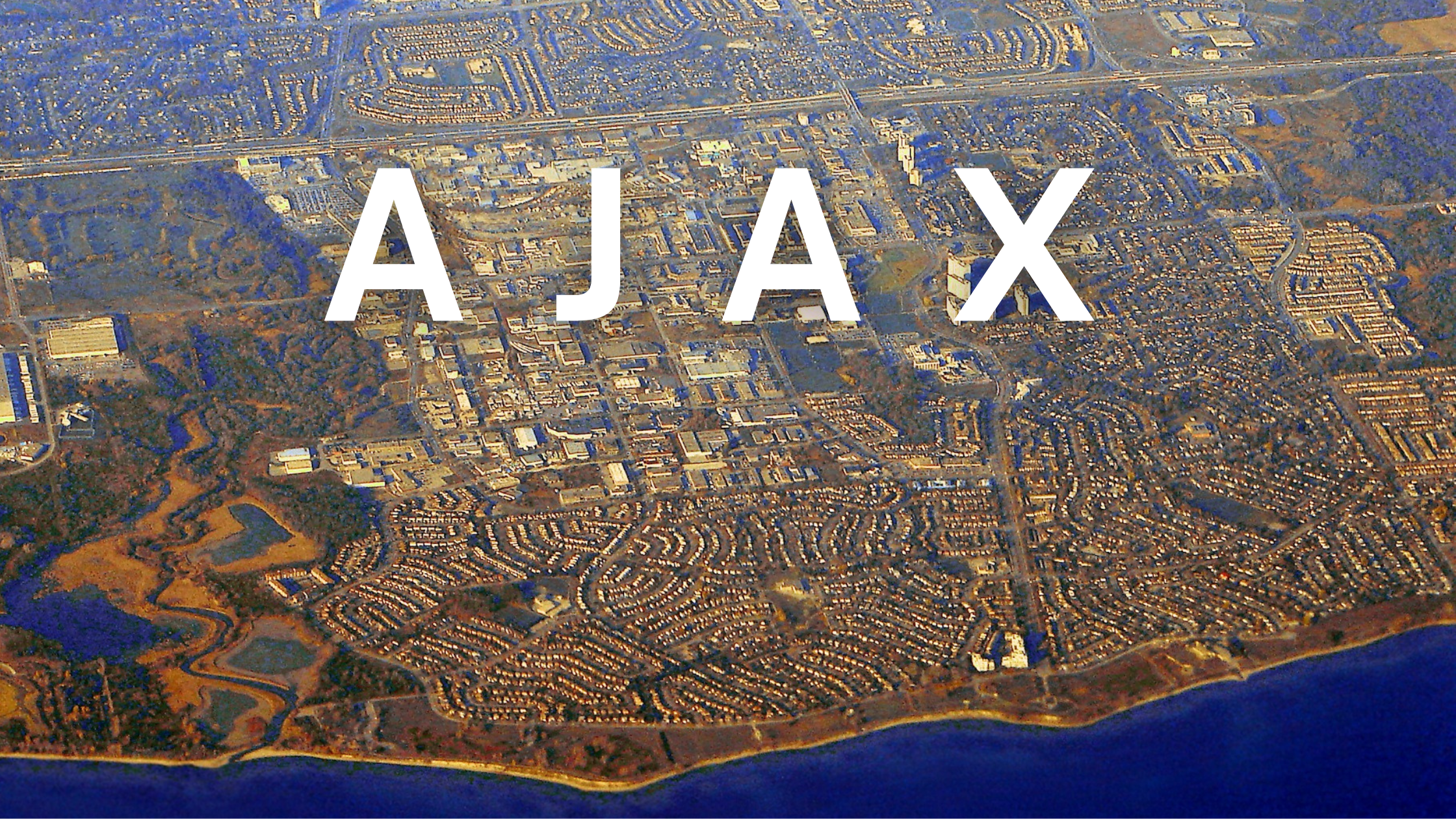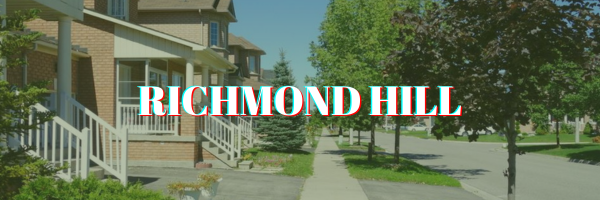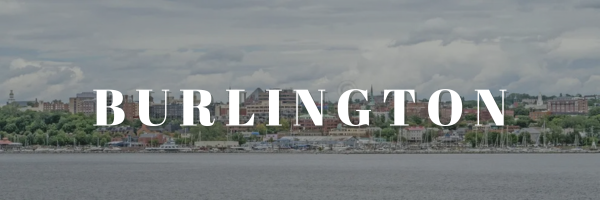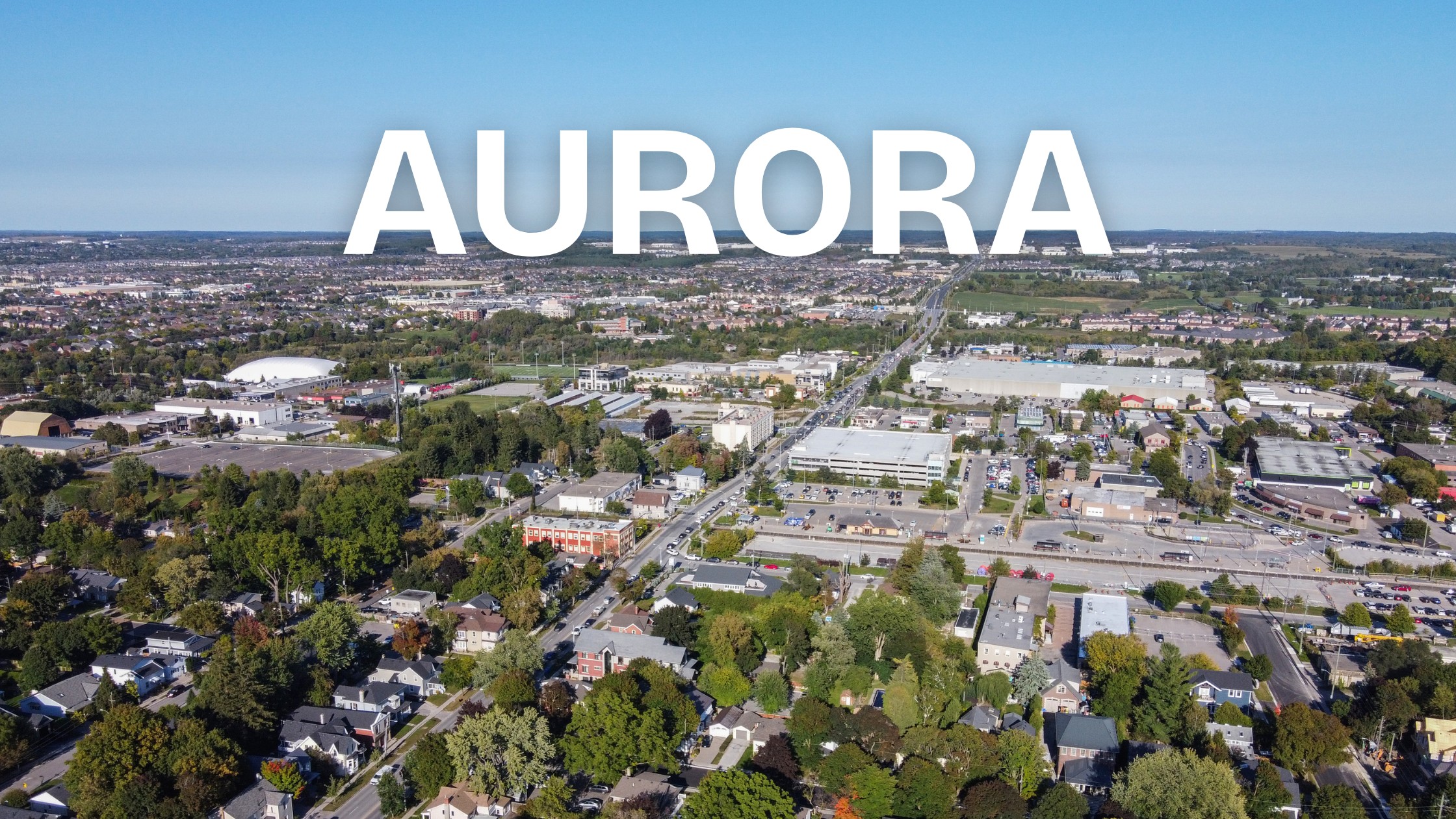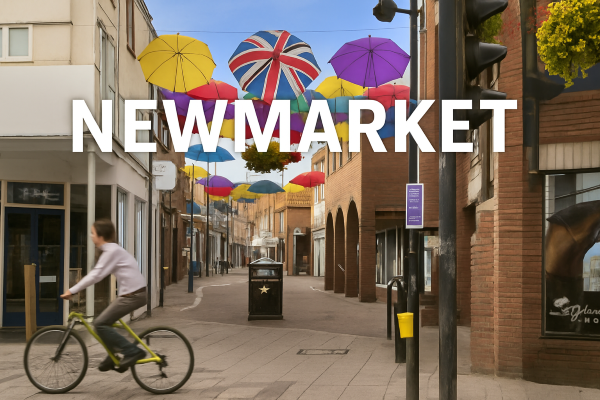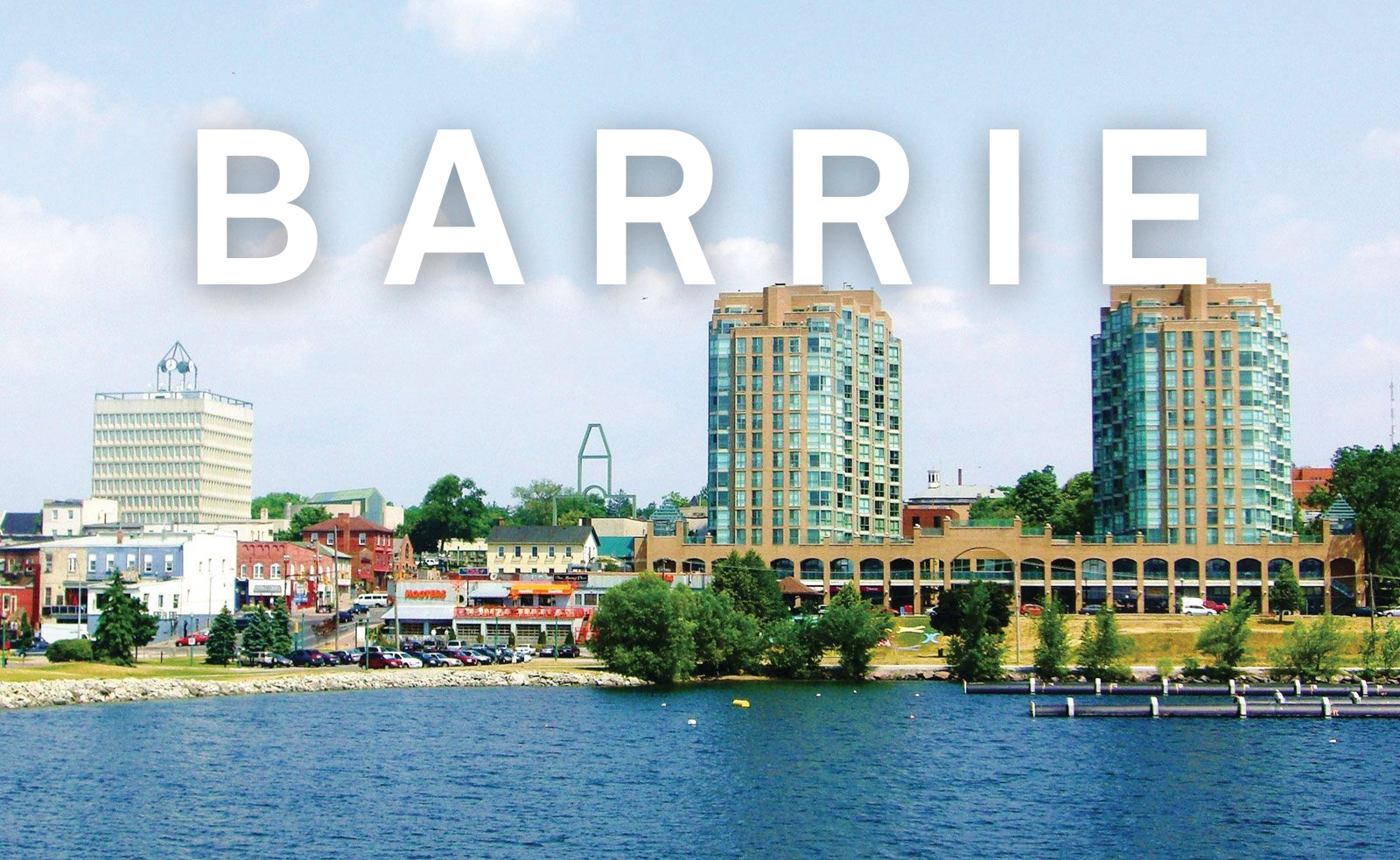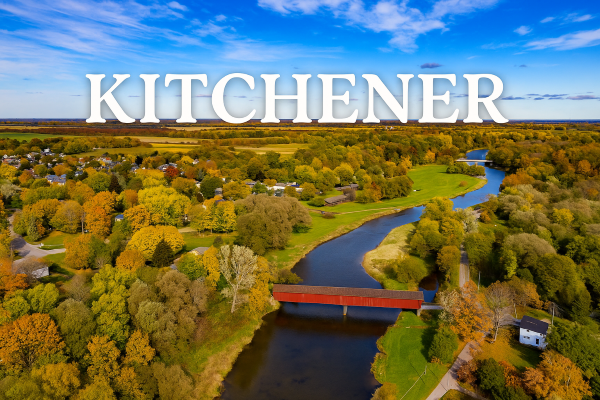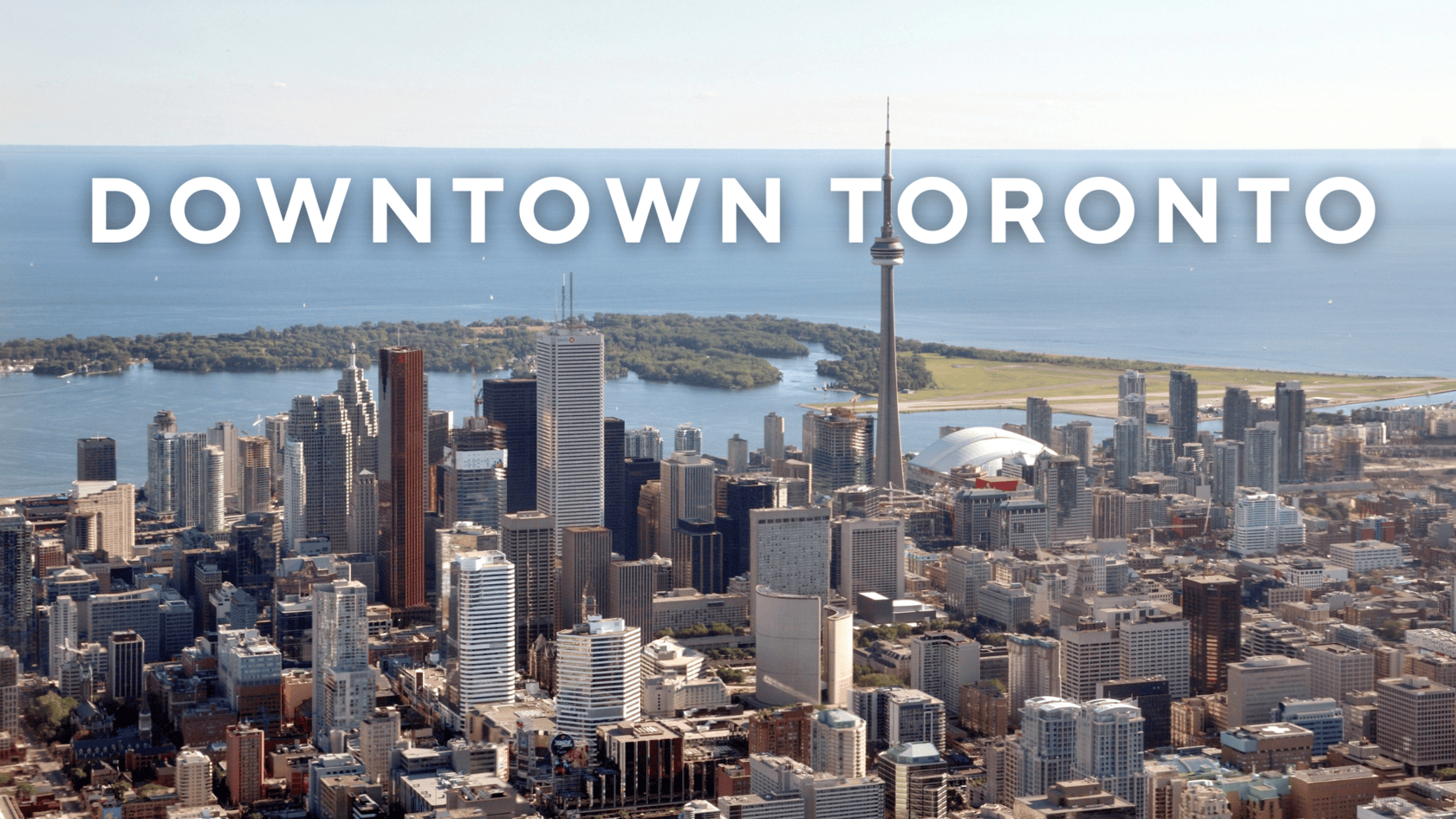
Thinking of Moving to Downtown Toronto in 2025? Here's a Full Guide to Life, Cost, and Community
Thinking of moving to Downtown Toronto? Explore everything from housing, jobs, schools and lifestyle in this detailed relocation guide.
Table of Contents

Introduction: Thinking About Moving to Downtown Toronto?
Downtown Toronto offers excitement, opportunity, and diversity for all types of movers- from young professionals to growing families.
Relocating to a new city can be overwhelming, especially when it’s as large and dynamic as Toronto. But when it comes to Downtown Toronto, the payoff is tremendous. With its iconic skyline, bustling streets, incredible food scene, and career opportunities, it’s no wonder people across Canada and around the world are making it their new home. This comprehensive guide will help you understand every aspect of relocating to Downtown Toronto in 2025.
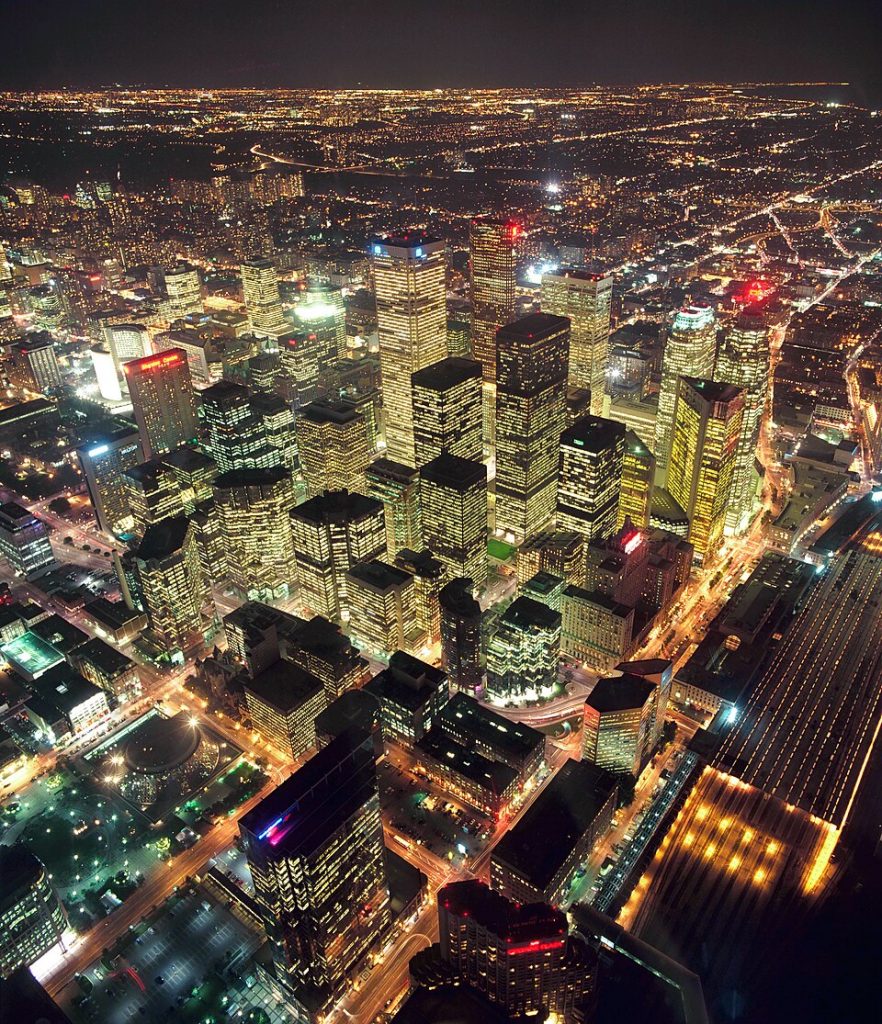
Downtown Toronto at Night from The CN Tower, by The City of Toronto – Flickr: Toronto: downtown at night from the CN Tower, CC BY 2.0, Link
Demographics and Diversity: Let’s See Who Lives in Downtown Toronto
TL;DR: Downtown Toronto is young, global, and full of cultural variety.
Downtown Toronto is one of the most vibrant, multicultural urban areas in North America. As of 2025, the area is home to over 275,000 residents, with the population expected to grow significantly due to ongoing development projects and increased immigration (City of Toronto).
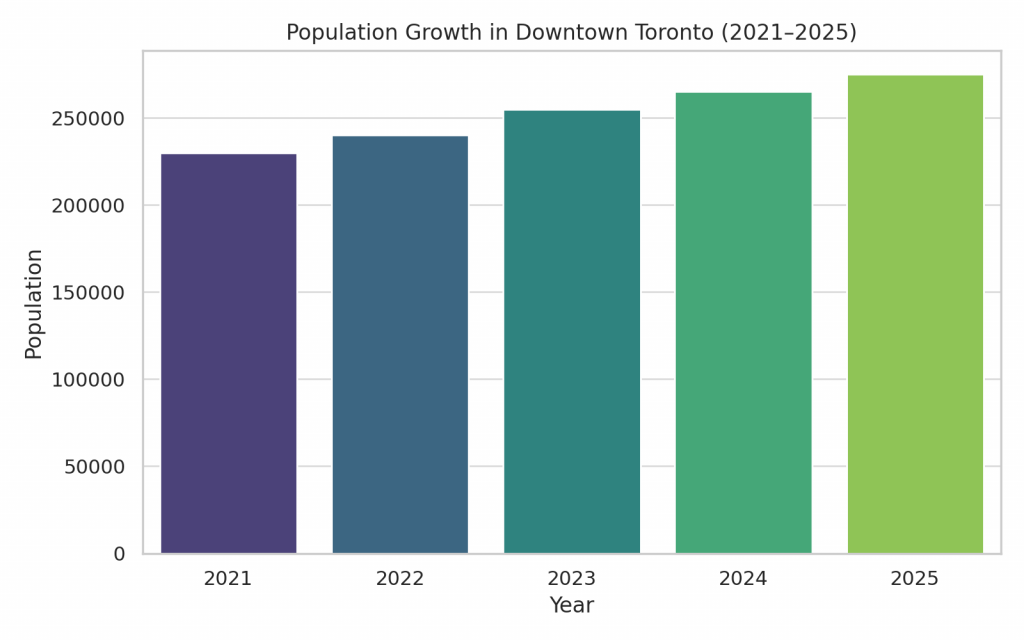
Key Facts:
- Median age: ~35 years
- 51% of residents identify as visible minorities
- Over 160 languages spoken citywide
- More than 50% of Toronto residents are immigrants
This youthful and diverse demographic brings energy and cultural richness to daily life. Whether you’re walking through Chinatown, Little Italy, or the Entertainment District, you’re never far from a new cultural experience.
Finding A Place to Live
TL;DR: Expect modern condos and high prices—rent first if unsure.
Downtown Toronto’s housing market is diverse, modern, and competitive. The skyline is dominated by sleek high-rise condos, but you can also find charming historic townhouses in pockets of older neighborhoods (TRREB).
Rental Market (2025 Averages):
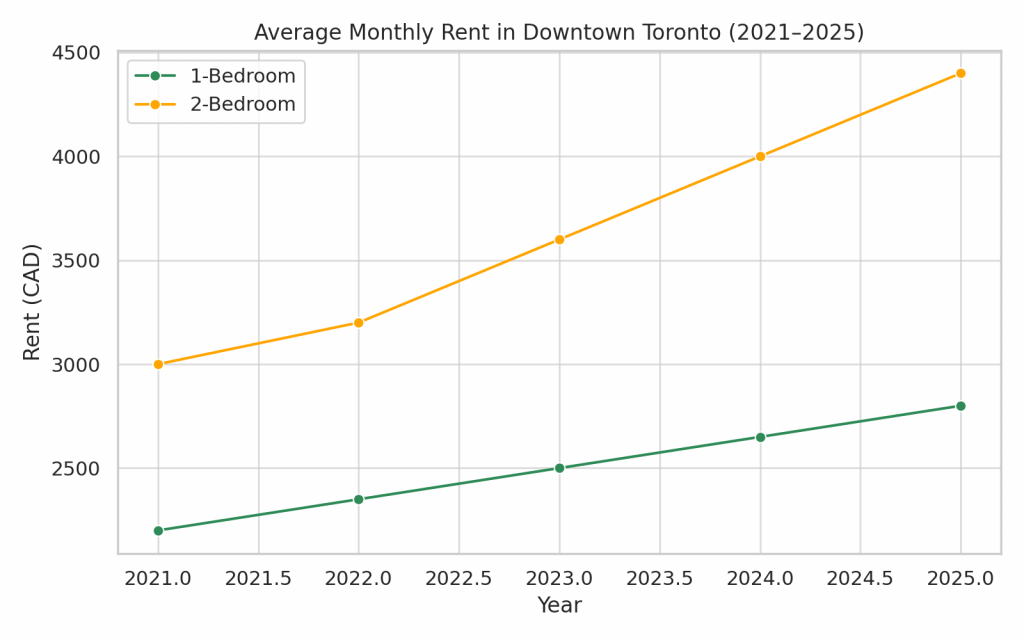
- 1-Bedroom Condo: $2,400 – $3,200/month
- 2-Bedroom Condo: $3,500 – $4,800/month
- Bachelor Apartments: $1,800 – $2,500/month
Homeownership:
- Average Condo Price: $850,000
- Detached Homes: $2M+, rare in the downtown core
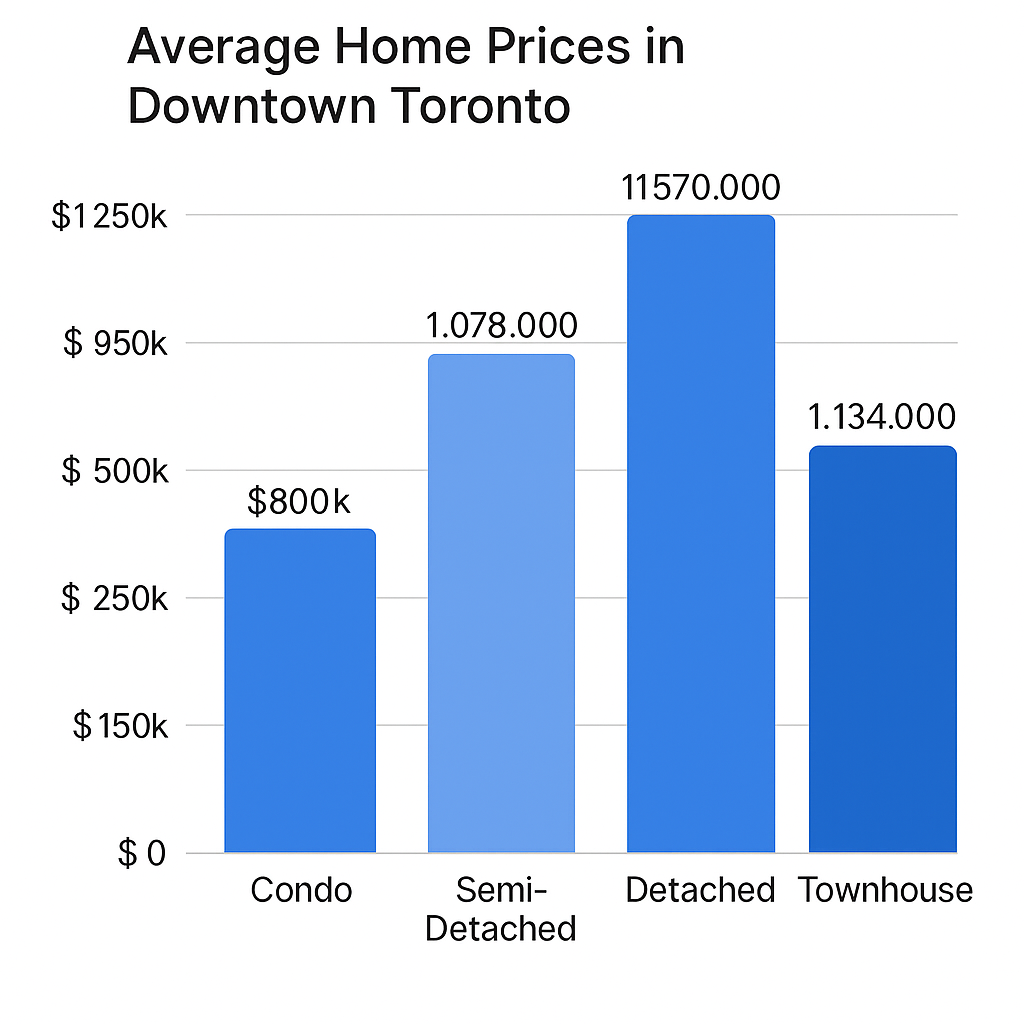
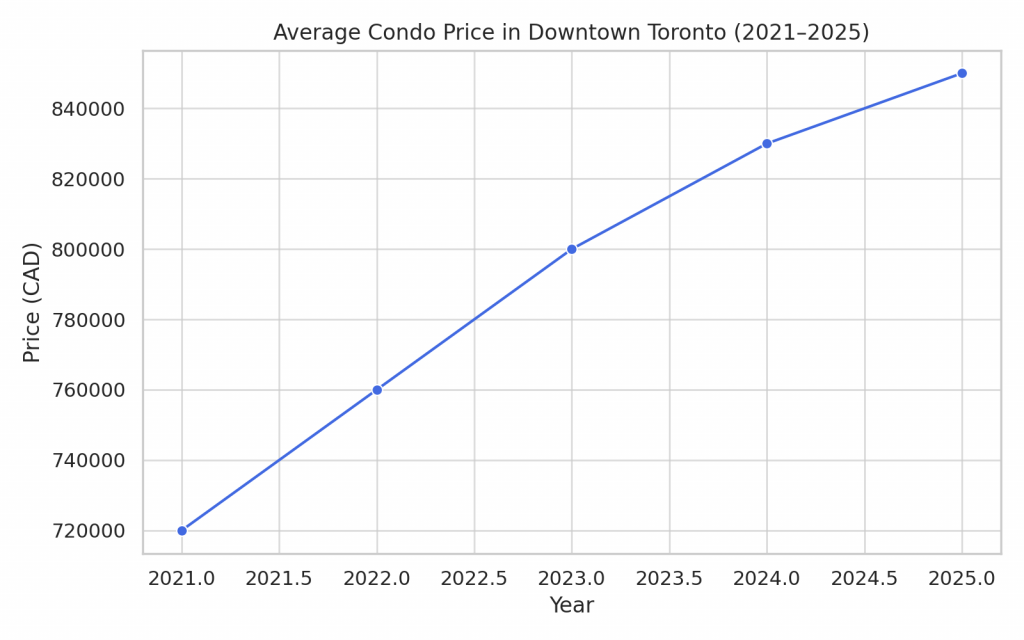
Tips:
- Consider renting before buying to get a feel for the area.
- Look at pre-construction condo investments.
- Check for buildings with rent-controlled units.
Neighbourhoods of Downtown Toronto
TL;DR: Downtown Toronto has a neighborhood for every personality—explore and find your fit.
Downtown Toronto is a mosaic of diverse and distinct neighborhoods, each offering a unique atmosphere and lifestyle. Here’s an in-depth guide to some of the most prominent areas:
1. Entertainment District
Known for its nightlife, theaters, bars, and landmarks like the CN Tower and Rogers Centre, the Entertainment District is ideal for young professionals and creatives. Condo living is the norm here, and residents enjoy walkability and 24/7 activity.

Rogers Centre
Pros: Walkable, vibrant, cultural scene
Cons: Noisy, higher rent, limited green space
2. Financial District
Toronto’s corporate core. Home to the big banks and major offices, it’s a hub for professionals working long hours. Few live here, but luxury condos are available. The PATH system makes winter commuting a breeze.
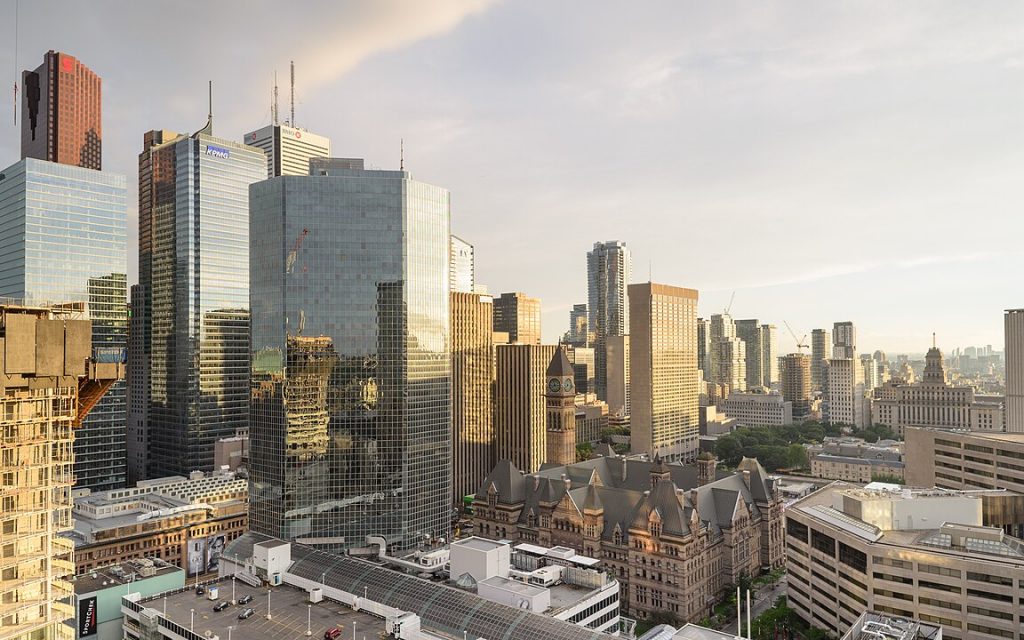
Financial District, Downtown Toronto By Arild Vågen – Own work, CC BY-SA 4.0, Link
Pros: Transit-friendly, close to work, prestigious
Cons: Quiet after hours, limited nightlife
3. Distillery District
Cobblestone streets and Victorian architecture define this pedestrian-only neighborhood. It’s home to art galleries, boutiques, and festivals like the Christmas Market. Perfect for creatives and culture lovers.
Pros: Historic charm, cultural events, scenic
Cons: Limited grocery options, more tourists
4. Queen West
A hotspot for artists, designers, and entrepreneurs. Queen West combines vintage stores with cutting-edge fashion and coffee shops. Trendy and edgy, it’s been named one of the world’s coolest neighborhoods (Vogue).
Pros: Artistic, unique shops, lively
Cons: Gentrification, pricey rents
5. Kensington Market
This laid-back area is an eclectic mix of cultures, foods, and vintage finds. Renters love the quirky homes and vibrant community energy. It’s less polished but full of character.
Pros: Affordable, multicultural, lively
Cons: Fewer modern amenities, noisy weekends
6. St. Lawrence Market
Historic yet family-friendly, this area blends old-world charm with urban convenience. The market itself is a foodie paradise. Excellent walkability and community appeal.
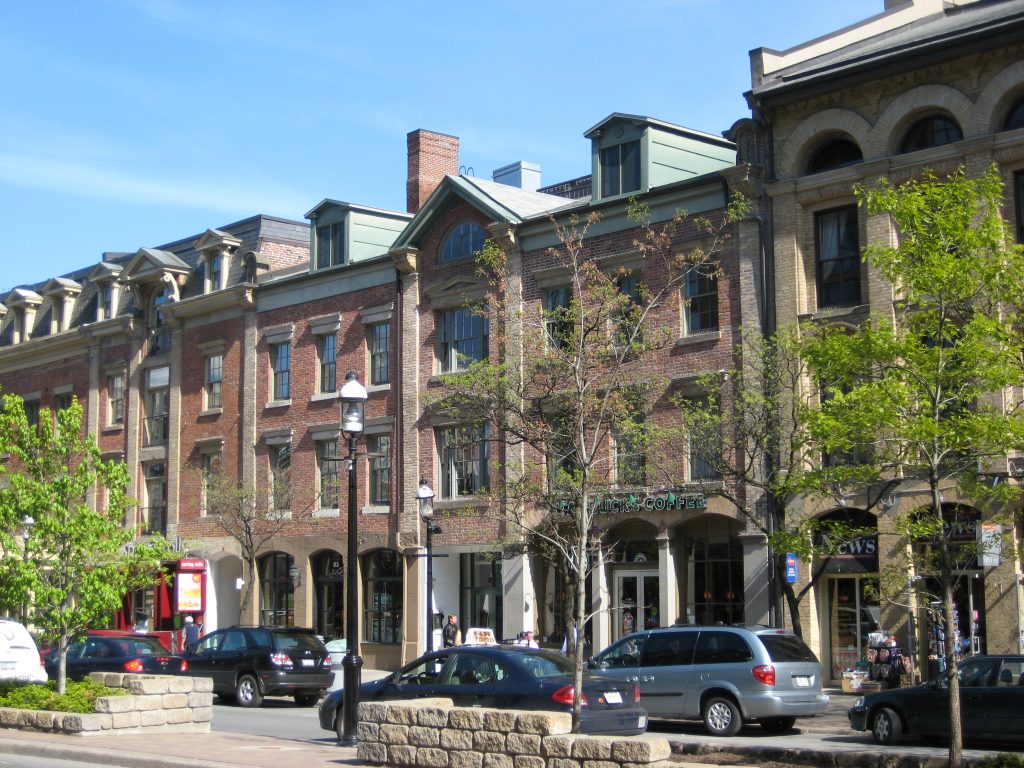
By SimonP – Own work, CC BY-SA 3.0, Link
Pros: Great for families, convenient, strong community vibe
Cons: Busy market area, limited nightlife
7. Harbourfront
If you crave waterfront views, Harbourfront is a top pick. Modern condos dominate the area, with scenic walking paths and ferry access to Toronto Islands.
Pros: Lake views, outdoor activities, new developments
Cons: Windy, fewer shopping/dining options
8. Church-Wellesley Village
Toronto’s LGBTQ+ heart. It’s a welcoming, inclusive area known for Pride events, vibrant bars, and inclusive businesses. A mix of apartments and condos line the area.
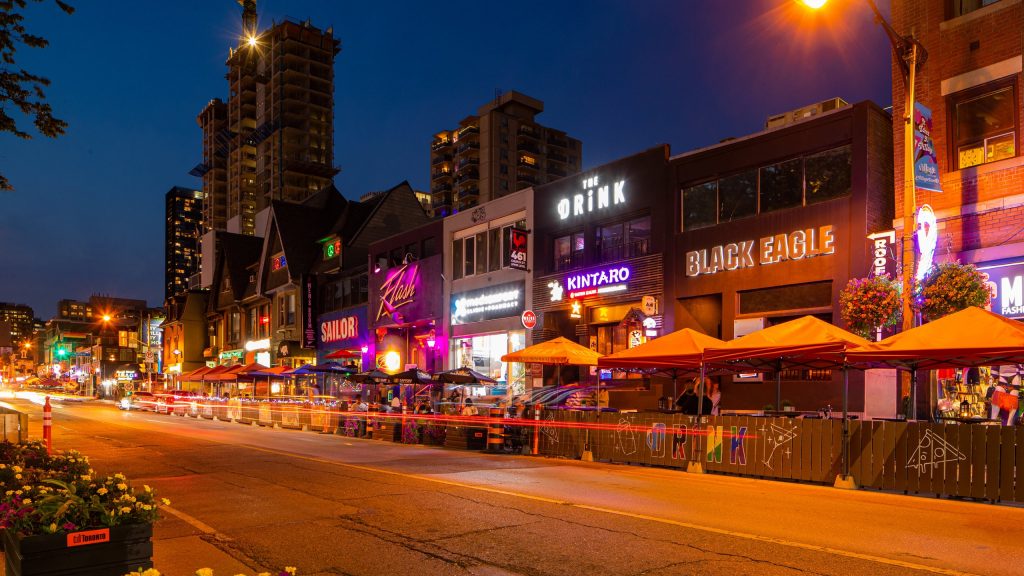
Pros: Inclusive, community-centered, nightlife
Cons: Can be loud, limited green space
What’s The Cost of Living Like?
TL;DR: High living costs—housing and transit are the biggest expenses.
Toronto is expensive, and Downtown is the priciest part. But the convenience, access, and lifestyle are worth it to many (Numbeo).
Average Monthly Expenses (2025):
- Rent (1-bedroom): $2,800
- Utilities: $150
- Groceries: $500
- Public Transit: $156
- Dining Out: $300
- Internet & Phone: $120
Pro Tip: Use a PRESTO card for discounts on transit and avoid driving if possible.
Where Can You Work?
TL;DR: Downtown Toronto offers abundant job opportunities in diverse industries—perfect for professionals.
Toronto is Canada’s economic powerhouse, and Downtown Toronto is the center of it all. Whether you’re in finance, tech, or healthcare, the city offers a wealth of opportunities. Major industries include banking, technology, tourism, and retail (City of Toronto Economic Development).
Top Employers:
- RBC (Royal Bank of Canada)
- TD Bank
- Shopify
There is also a growing tech scene, with companies like Shopify and Google setting up offices downtown. The proximity to these major employers makes Downtown Toronto an attractive place to both live and work.
Learning in the City
TL;DR: Downtown Toronto is home to prestigious universities and public schools, making it ideal for students and families.
Toronto boasts a rich educational landscape, with numerous schools, colleges, and universities offering high-quality education. Downtown Toronto is home to some of the city’s top institutions, including:
Top Universities:
- University of Toronto (Downtown campus)
- Ryerson University
- OCAD University
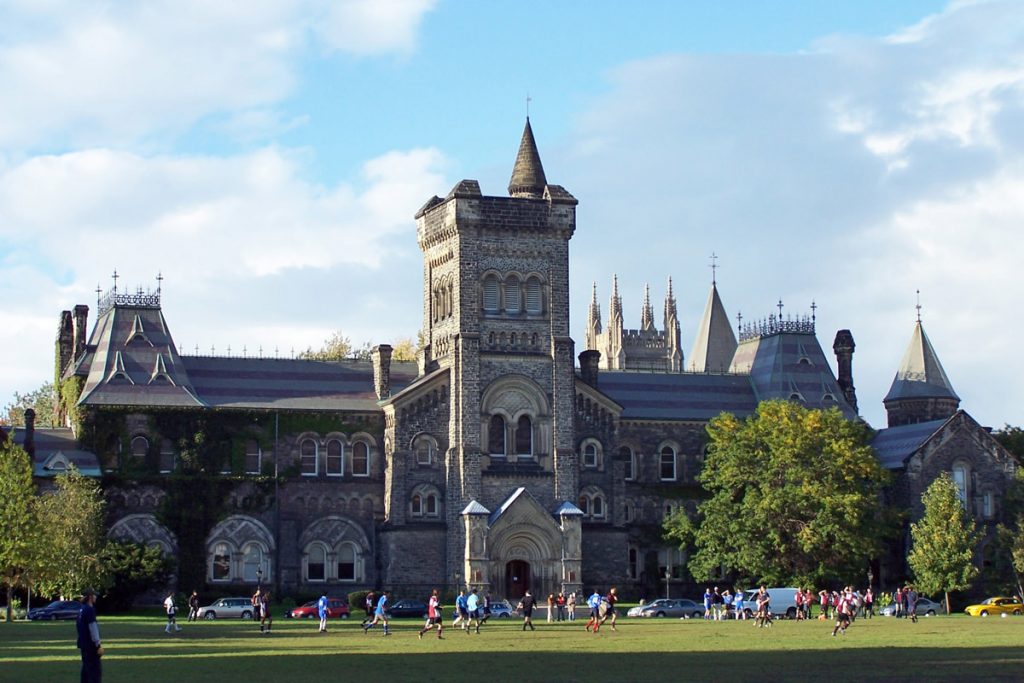
University of Toronto, by Jphillips23 – Own work, CC BY-SA 3.0, Link
Public Schools:
- University of Toronto Schools (UTS)
- Toronto District School Board (TDSB)
These institutions provide a range of academic programs and have strong reputations in the global educational community.
Taking Care of Your Health
TL;DR: Downtown Toronto offers access to world-class healthcare facilities and medical services.
Toronto’s healthcare system is among the best in Canada, with numerous hospitals and medical centers offering top-tier care. Downtown Toronto is well-served by healthcare facilities, with easy access to world-class hospitals.
Top Hospitals:
- Toronto General Hospital (University Health Network)
- SickKids Hospital
- Mount Sinai Hospital
- St. Michael’s Hospital
Residents benefit from a network of healthcare professionals, ensuring high-quality care is always within reach.
Is Downtown Toronto Safe?
TL;DR: Toronto is a safe city with some areas being safer than others—always be aware of your surroundings.
Toronto is one of the safest major cities in North America, with a relatively low crime rate. However, like any large urban center, some areas are more prone to crime than others.
Crime Rates:
- Crime Index (2025): Low to moderate
- Safety Score: High, especially in family-friendly neighborhoods like St. Lawrence Market and Church-Wellesley Village.
For personal safety, it’s recommended to familiarize yourself with the neighborhoods and plan your daily commutes during safer hours. Toronto’s police force is efficient and responsive to public safety concerns.
Parks, Playgrounds, and More
Royal Ontario Museum (ROM):
Located in downtown Toronto’s Yorkville neighborhood, the ROM is Canada’s largest museum of art, culture, and natural history. It features over 18 million artifacts, including dinosaur skeletons, ancient cultural treasures, and immersive exhibits like the Bat Cave. The museum is also known for its striking modern extension—the Michael Lee-Chin Crystal. Easily accessible by subway (Museum Station), it’s a top attraction in the heart of the city.
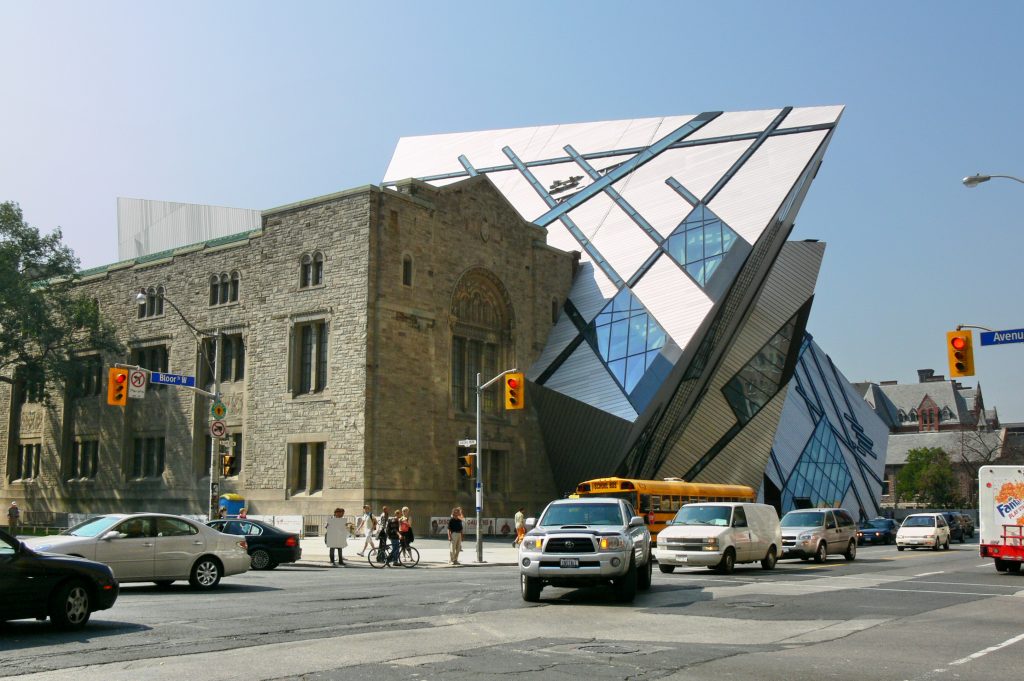
The Royal Ontario Museum, by Gisling – Own work, CC BY-SA 3.0, Link
TL;DR: A variety of parks and outdoor activities are perfect for staying active and enjoying nature.
If you’re an outdoor enthusiast, Downtown Toronto has plenty to offer. With numerous parks, bike trails, and waterfront areas, there’s no shortage of outdoor activities.
Top Parks:
- High Park (Toronto’s largest park, great for walking and picnics)
- Toronto Islands (beach access, biking)
- Queens Park (near the Ontario Legislative Building)
Outdoor Activities:
- Cycling on Toronto’s extensive bike lanes
- Boating on Lake Ontario
- Hiking in local trails
For those who love nature and the outdoors, Downtown Toronto offers a blend of urban and green spaces.
Tips for A Smooth Move
Moving to Downtown Toronto is a big decision, and proper planning will ensure a smooth transition. Here are some tips to help you get settled:
1. Plan Your Budget Carefully
Toronto is expensive—ensure your budget covers rent, utilities, food, and transportation.
2. Consider Transit Options
Public transit is often the best way to get around, especially if you live close to a subway station. Consider getting a PRESTO card for discounted fares.
3. Understand Your Work-Life Balance
Downtown is busy, so it’s important to maintain a healthy work-life balance. Look for apartments close to parks or places where you can relax.
4. Use Professional Movers
Hiring experienced movers like Takeoff Moving will make your transition to Toronto much smoother. They specialize in local moves and offer professional packing, unpacking, and delivery services.
Why Choose Takeoff Moving
When it comes to relocation, professional movers make all the difference. Takeoff Moving offers:
- Experienced Crew: Professional movers with years of experience.
- Customizable Services: Packing, unpacking, and storage options.
- Fast & Efficient: They know Toronto inside and out, ensuring your move is smooth and stress-free.
Visit Takeoff Moving for more details or call us for a free estimate!
Ready to Move to Downtown Toronto?
Takeoff Moving Company is your trusted relocation partner. From within The Greater Toronto Area, anywhere in Canada, or international arrivals, we offer tailored solutions from packing to storage to moving, all to meet every budget and timeline.
- 📦 Local and long-distance moves
- 🌐 International relocation support
- 🛠️ Packing, unpacking, and storage options
- 📍 Trusted by families, students, and professionals
FAQs
What are the most common types of housing available in Downtown Toronto?
Downtown Toronto primarily offers high-rise condos, luxury apartments, and a few detached homes. Condo living is the most common due to the density of the area, but there are also options for townhouses, especially in neighborhoods like the Distillery District and St. Lawrence Market.
How do I find a rental in Downtown Toronto?
Renting in Downtown Toronto can be competitive, but platforms like Rentals.ca and Zumper offer listings that help you search for available properties. It’s a good idea to reach out to landlords or property managers early, as listings can be taken quickly.
What public transportation options are available?
Toronto’s public transit system includes buses, streetcars, and the subway. The Toronto Transit Commission (TTC) operates these services, which cover most areas of Downtown. You can use the PRESTO card to pay for your transit fares, which also offers discounted fares for frequent riders.
How expensive is living in Downtown Toronto?
Downtown Toronto is one of the most expensive areas in Canada. The average rent for a 1-bedroom apartment is around $2,800/month. Prices for purchasing property are also high, with the average price for a condo around $850,000. Utility costs and groceries add to the overall expense. However, the convenience of living in the downtown area with easy access to amenities can make it worthwhile for many people.
Is Downtown Toronto safe?
Downtown Toronto is considered relatively safe, especially in terms of major urban areas. However, like any big city, there are neighborhoods that may have higher crime rates. It’s always important to stay alert, especially at night, and check crime reports for specific areas. The Toronto Police Service provides crime data and safety tips on their website.
What are some family-friendly activities in Downtown Toronto?
Downtown Toronto offers many family-friendly activities, such as visiting the Royal Ontario Museum, taking a walk through High Park, or exploring the top family-friendly activities around the city. You’ll also find numerous outdoor parks and beaches, including Toronto Islands, where families can enjoy nature and recreational activities.
How do I move my belongings to Downtown Toronto?
If you’re moving to Downtown Toronto, using a reputable moving company is a good option. Takeoff Moving is a great resource for those looking for professional movers who can help with both local and international moves. It’s always best to get quotes from multiple companies and ensure they are experienced in handling urban moves, especially in dense areas like Downtown Toronto.


